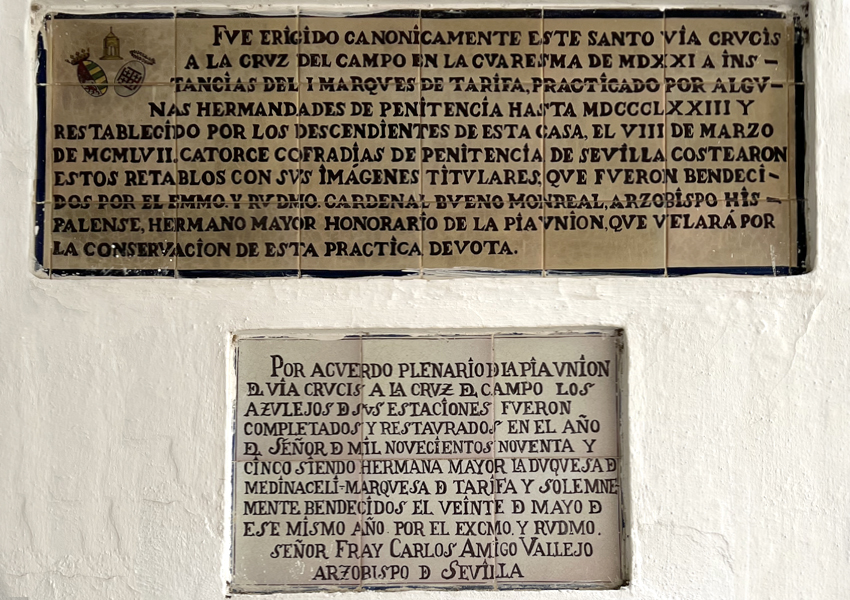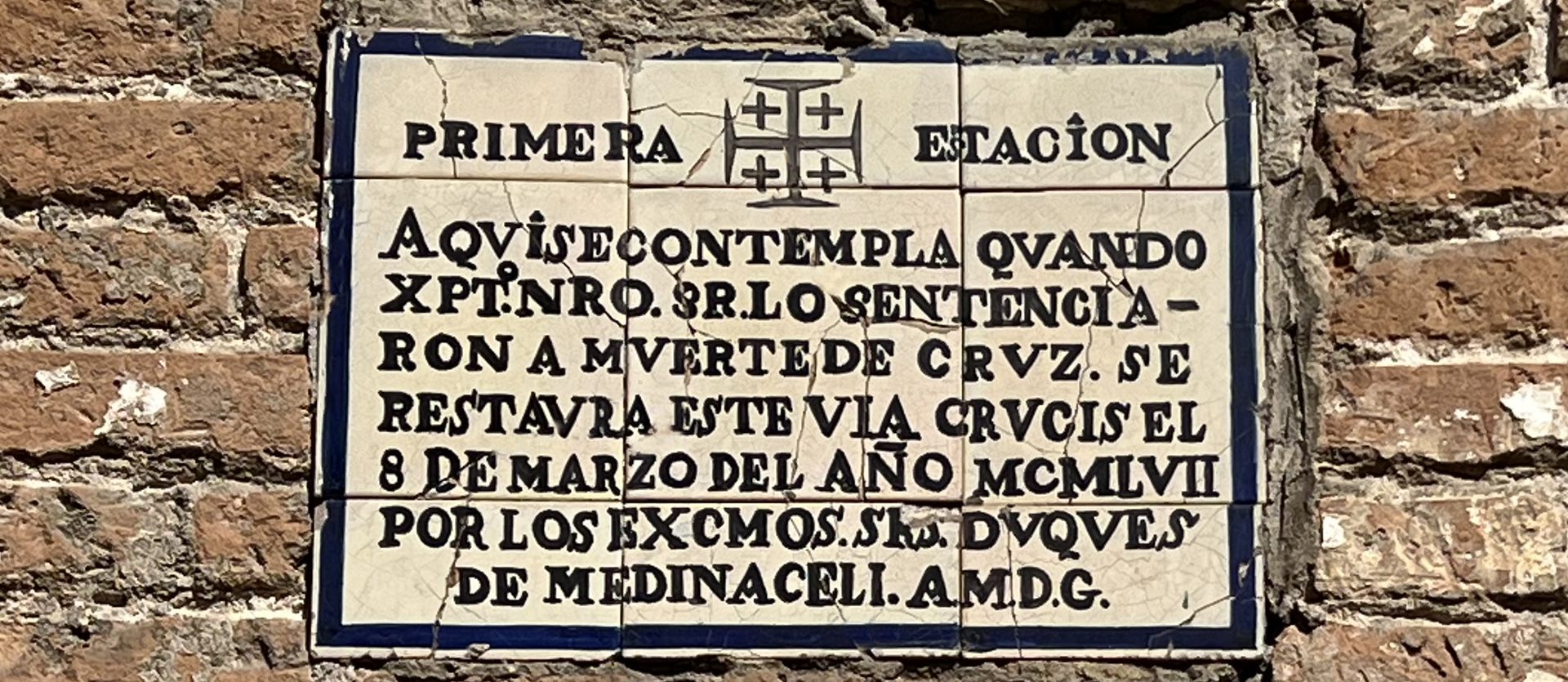Stations of the Cross to the Cross of the Camp
Its re-establishment by the Pious Union
In the Casa de Pilatos in Seville, every first Friday in March, there is a The Way of the Cross, which recalls the one established by Fadrique Enriquez de Ribera, 1st Marquis of Tarifa on his return from Jerusalem.The association was set up in order to perpetuate the memory of the one he had prayed for in the Holy Land between what was pointed out to him as the ruins of the Praetorium and Mount Calvary. An association known as the Pious Union to the Cruz del CampoThe General Council of Brotherhoods and Brotherhoods of Seville, to which all those who make up the General Council of Brotherhoods and Brotherhoods of Seville and each of the senior brothers of all the city's penitential brotherhoods are ex officio members, is responsible for ensuring its organisation and maintenance, for which it holds an annual preparatory assembly.
In the 1950s a group of enthusiastic Sevillian brotherhoods, with the support of the Duke of Medinaceli and Alcalá, Rafael Medina Vilallonga, were determined to re-establish the Way of the Cross to the Cruz del Campo, instituted by the 1st Marquis of Tarifa, which had ceased to be practised at the end of the 19th century. The initial opposition of Cardinal Segura, who did not want to compete with the Way of the Cross held at the monument to the Sacred Heart of Jesus, which he had chosen as his family mausoleum, delayed the re-establishment until the appointment as apostolic administrator of the man who had been until then coadjutor of the archdiocese, José María Bueno Monreal (J. González Moreno, 1992, p. 75).
Thus, on the first Friday of Lent in 1957, the Way of the Cross was once again celebrated according to the itinerary established in the Baroque period, starting from the Casa de Pilatos and reaching the shrine of the Cruz del Campo. A year later, on 4 August 1958, Cardinal Bueno Monreal canonically erected a Pious Union, with its headquarters in the chapel of the Flagellation of the Casa de Pilatos.Asociación Piadosa del Santo Vía Crucis a la Cruz del Campo", with no other aim than to encourage the devout practice of praying the Way of the Cross among the Sevillian brotherhoods, and at the same time it approved its rules. The following year, the Way of the Cross was celebrated on the first Friday in March, and not during Lent, in order to coincide with the day of veneration of the images of N.P. Jesús Cautivo y Rescatado or Medinaceli.
At the time of the Foundation's creation, in 1978, the Way of the Cross was already being held, as it is today, only inside the main courtyard of the Casa de Pilatos every first Friday in March, and attendance had fallen off sharply, seeming doomed to disappear again. This led the Foundation in 1985 to establish contacts with José Sánchez Dubé, former president of the Council of Brotherhoods and Guilds of Seville, a person so involved in the Sevillian brotherhood world, in order to revitalise the historic Stations of the Cross, a task in which the Duke of Segorbe, then secretary general of the Foundation, was personally involved. The work focused on involving the Council of Brotherhoods and those who, according to the rules of the Pious Union, were ex officio members of this pious association, the older brothers of all the Penitence brotherhoods of the city, insisting on the need for all to attend the preparatory meeting for the Stations of the Cross which, as required by the rules, was held in the Casa de Pilatos. Thus, since then, year after year, the Stations of the Cross on the first Friday of March in the Casa de Pilatos are organised in mid-February in a preparatory assembly that brings together the following people all the members of the General Council of Brotherhoods and Confraternities and all the older brothers and sisters of the Penitential Brotherhoods. The new members take the oath of allegiance to the rules at this meeting in the city of Seville. In addition, the custom was established of preceding this assembly with a brotherhood lunch offered by the Foundation to all the ex officio members of the Foundation. Pia Union.
By agreement of the first of these councils, the Foundation is responsible for covering all the expenses generated by the annual celebration of this devotional practice and for making the medals that each brother wears and the parchment that specifies the condition of his link to the "Pía Unión del Vía Crucis a la Cruz del Campo", whether as an ex officio member or as a faithful who applies to join, as the association is open to all devotees who wish to do so.
Since then, attendance at the Stations of the Cross on the first Friday in March has continued to grow, so that we can consider the recovery of one of Seville's most important religious and spiritual traditions to be consolidated. A further mark of this recovery was the replacement of all the tiles representing the stations of the Via Dolorosa, in its historic itinerary, which passes through our city along the streets of San Esteban and Luis Montoto until it reaches the shrine of the Cruz del Campo. Some of these tiles had disappeared or were very deteriorated, and all of them have been restored and replaced, being solemnly blessed by the Archbishop of Seville on 20 May 1995, as the commemorative tombstone that was placed on the side of the façade of the Ecce Homo of the House of Pilate.


